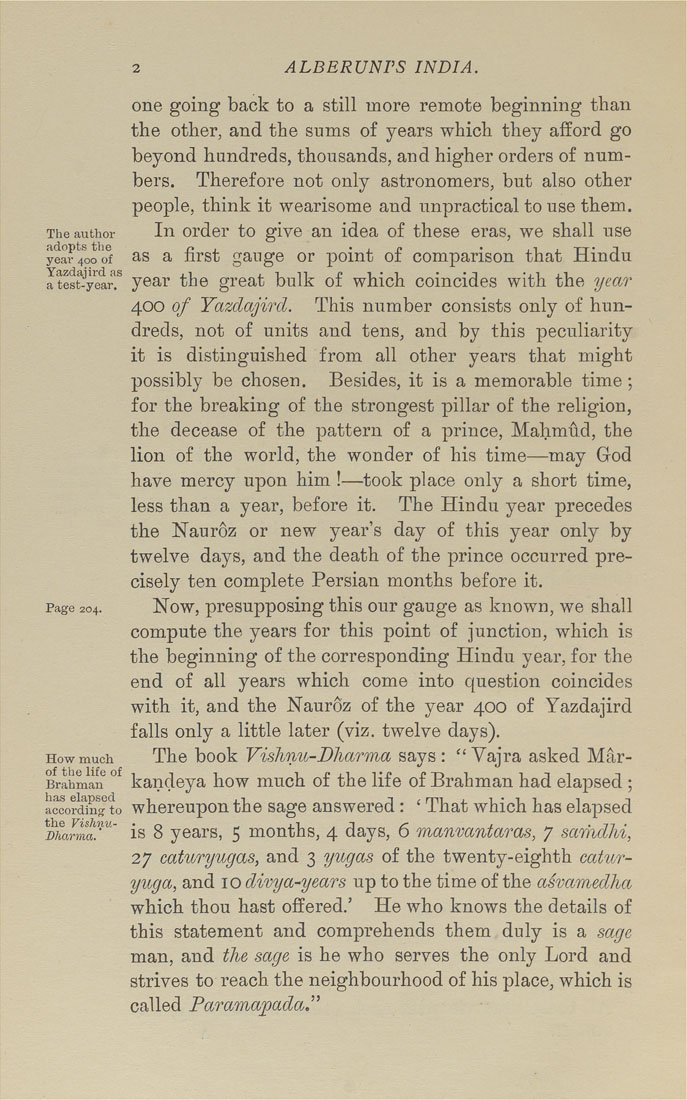2 A LB BRUNTS INDIA.
one going back to a still more remote beginning than
the other, and the sums of years which they afford go
beyond hundreds, thousands, and higher orders of num¬
bers. Therefore not only astronomers, but also other
people, think it wearisome and unpractical to use them.
The author In Order to give an idea of these eras, we shall use
adopts the j2j_ • j_ j' • iIjtt-t
year 400 of as a first gaugc or point 01 comparison that Hindu
atesf-year? JQSiV the great bulk of which coincides with the year
400 of Yazdajird. This number consists only of hun¬
dreds, not of units and tens, and by this peculiarity
it is distinguished from all other years that might
possibly be chosen. Besides, it is a memorable time;
for the breaking of the strongest pillar of the religion,
the decease of the pattern of a prince, Mahmud, the
lion of the world, the wonder of his time—may God
have mercy upon him !—took place only a short time,
less than a year, before it. The Hindu year precedes
the Nauroz or new year's day of this year only by
twelve days, and the death of the prince occurred pre¬
cisely ten complete Persian months before it.
Page 204. Now, presupposing this our gauge as known, we shall
compute the years for this point of junction, which is
the beginning of the corresponding Hindu year, for the
end of all years which come into question coincides
with it, and the Nauroz of the year 400 of Yazdajird
falls only a little later (viz. twelve days).
How much The book Vishnu-Dliarma says : "Yajra asked Mar-
Brahman ° kandeya how much of the life of Brahman had elapsed ;
^^ irdirfi^to whereupon the sage answered: ' That which has elapsed
aocorc
^Dharma!^^'" is 8 years, 5 months, 4 days, 6 manvantaras, 7 samdhi,
27 caturyugas, and 3 yugas of the twenty-eighth catur¬
yuga, and 10 divya-years up to the time of the asvamedha
which thou hast offered.' He who knows the details of
this statement and comprehends them duly is a sage
man, and the sage is he who serves the only Lord and
strives to reach the neighbourhood of his place, which is
called Paramapada."
|








